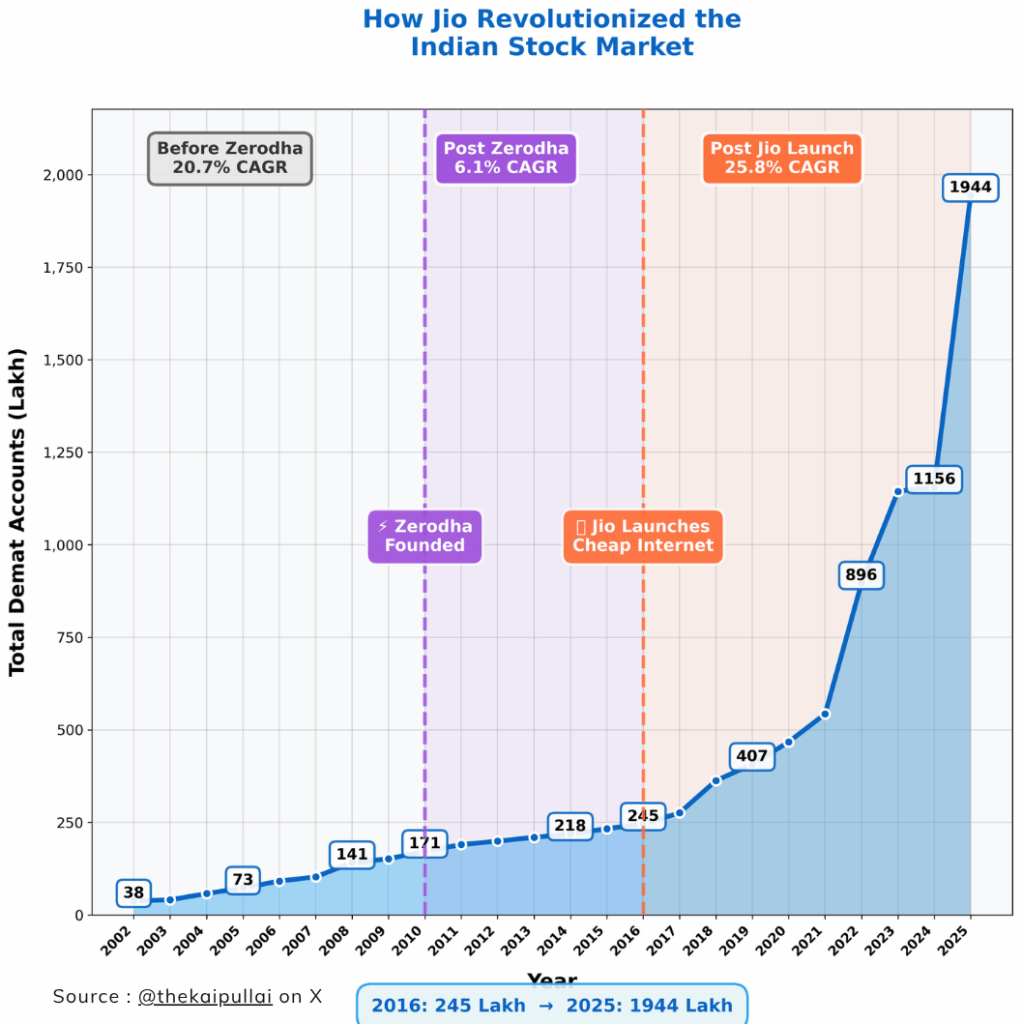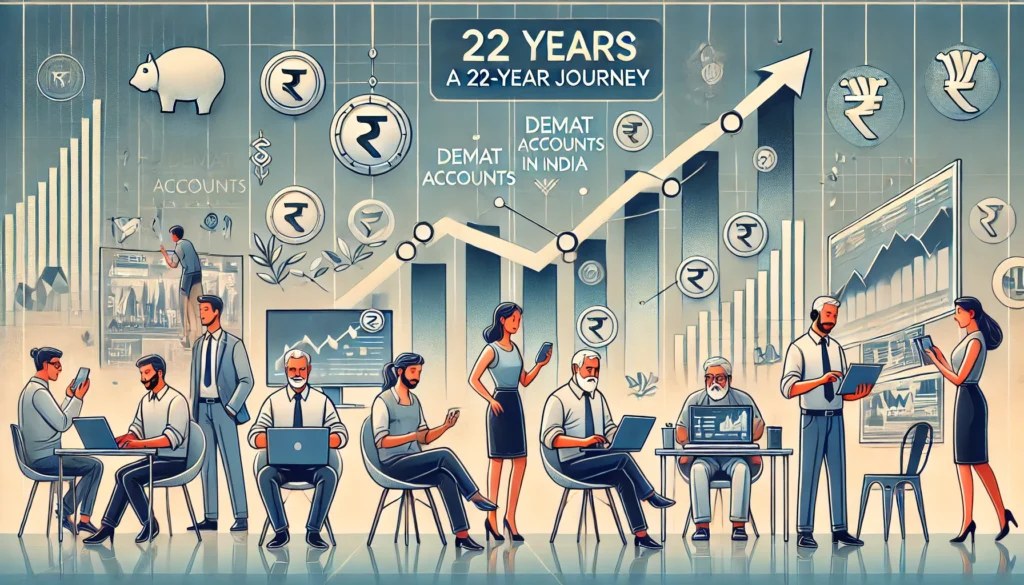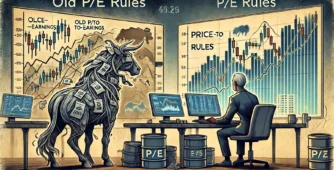The Early Years of Demat Growth
In the early 2000s, India began to see steady growth in demat accounts as more people started entering the financial markets. Between the early 2000s and 2010, the number of accounts grew at a fast pace of nearly 20% annually (see the image below).

However, after the global financial crisis of 2008, the momentum slowed down. The markets went flat for nearly six years, and the number of new demat accounts rose at a much slower rate of around 6% per year.
The Turning Point with Low-Cost Broking
A major turning point came in 2010 when discount broking entered the scene. The idea of zero-cost delivery trading attracted many new investors who were earlier kept away by high brokerage fees. This shift began to open the world of investing to a much wider audience. Yet, despite this new low-cost model, the overall pace of growth in demat accounts remained modest for the next few years as the market still lacked mass participation.
The Digital Revolution with Jio
The real change began when affordable internet became widely available in India after the launch of Jio. Suddenly, millions of people across the country had cheap and fast internet access on their mobile phones. This digital revolution brought financial apps and trading platforms into everyone’s hands. For the first time, investing was no longer limited to big cities or to those with desktop computers.
The Pandemic Push
Then came the COVID-19 pandemic in 2020, which acted as a massive accelerator. People had extra time at home, a phone in their hand, and easy access to trading apps. This combination led to an explosion in the number of new demat accounts being opened. Low-cost and mobile-first brokerages became the new normal. The financial market participation saw a sharp rise across all sections of the population.
From Lakhs to Crores: A New Era
The numbers tell a powerful story. India had about 2.45 crore demat accounts in 2016. In just nine years, that number has jumped to nearly 20 crore. Even though some of these accounts may not be very active, this growth shows how deeply financial markets have entered the lives of ordinary people. The share market is no longer the domain of a few — it has become a part of mainstream India.
The Legacy of Change
The rise of demat accounts in India is not just about numbers. It reflects a complete transformation in access, technology, and investor behavior. The blend of cheap internet, user-friendly trading platforms, and a growing appetite for investing has built a new financial ecosystem. This remarkable journey shows how a few key changes can completely reshape a country’s financial landscape.










